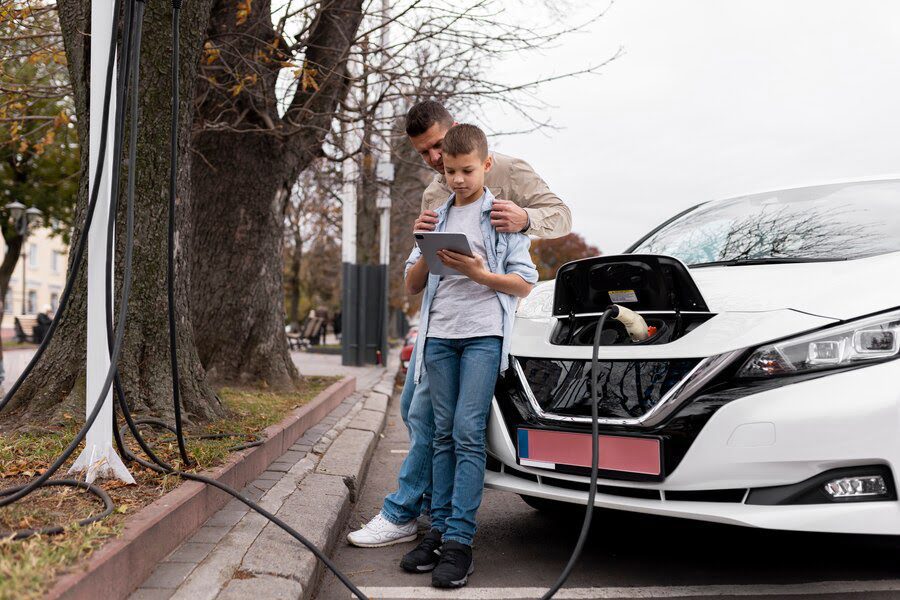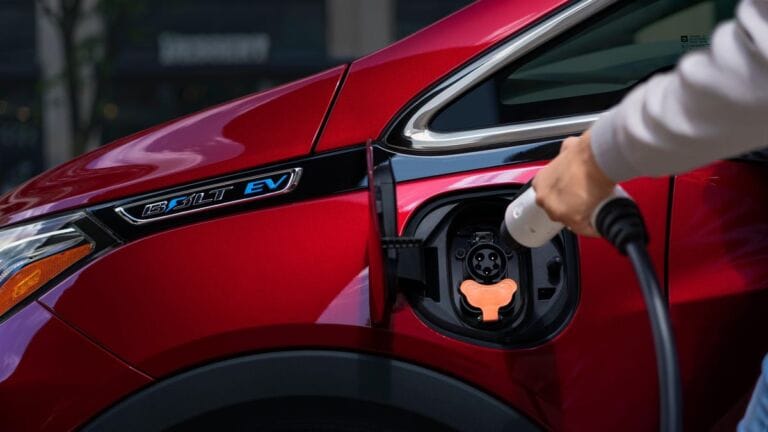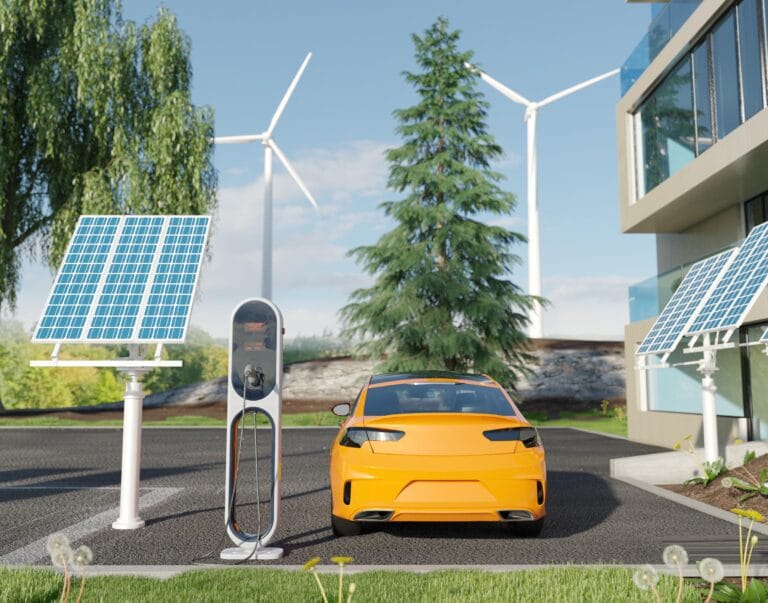
Can Canada’s Infrastructure Handle the Electric Vehicle Boom?

Table of Contents
Canada is entering a pivotal moment in its electric vehicle (EV) transition. EVs made up just 5.3% of new vehicle registrations in 2021, but the federal government aims for 60% by 2030 and 100% by 2035. Achieving this requires more than just selling cars. It requires a comprehensive transformation of infrastructure, significant business investment, and revised policy.
Charging Infrastructure: The First Bottleneck
The federal government has pledged to fund 84,500 new chargers by 2029, yet industry experts warn this may fall short. Canada will need over 200,000 public chargers by 2035 to meet projected demand. Urban hubs are seeing progress, but rural and northern regions remain underserved, posing challenges for long-distance travel and equitable EV adoption.

Private companies are stepping in. Petro-Canada and Electrify Canada are rapidly expanding fast-charging corridors along highways. Businesses installing EV chargers are also seeing an advantage, with studies showing EV drivers spend 20–30 minutes longer at retail locations while charging, boosting local commerce.
Pressure on Canada’s Electrical Grid
The shift to EVs will add significant demand to the grid. A study by the Canadian Climate Institute highlights that mass overnight charging could cause strain during peak evening hours, even leading to localized blackouts if unmanaged.

Solutions are emerging:
- Smart charging systems shift charging to off-peak hours.
- Bidirectional charging allows EVs to feed energy back into the grid, turning cars into mobile batteries.
- Provinces like Alberta are piloting data-driven programs to study consumer charging behavior, offering up to $250 incentives for participation.
This transition is not just a challenge — it’s an opportunity for energy companies and tech startups to innovate in grid resilience and clean energy integration.
EV Manufacturing and Battery Supply Chains
Canada is quickly positioning itself as a hub for EV production.
- Volkswagen’s $7B battery gigafactory in St. Thomas, Ontario will begin production in 2027, creating up to 3,000 jobs.
- General Motors has converted its Ingersoll, Ontario facility into Canada’s first full-scale EV assembly plant, targeting 50,000 vehicles annually by 2025.
- Canada holds key reserves of nickel, lithium, and cobalt, essential for EV batteries, putting it in a prime position to supply both domestic and global markets.
This isn’t just about cars — it’s about building a sustainable industrial ecosystem, reducing reliance on imported batteries, and strengthening Canada’s role in the clean economy.
The Weight and Road Infrastructure Question
EVs are heavier than traditional cars due to their large batteries. This raises concerns about road wear, tire emissions, and collision risks. Municipalities may need to increase road maintenance budgets, but manufacturers are exploring lightweight materials and next-gen solid-state batteries to offset the issue. For businesses, this opens avenues in advanced materials and recycling technologies.
Home and Workplace Charging: The Business Edge
While public chargers are crucial, 80% of EV charging happens at home or work. Businesses offering Level 2 charging stations are already attracting eco-conscious employees and customers. For households, incentives are available in several provinces to cover part of installation costs, further lowering barriers to adoption.
The Business Case for Canada’s EV Transition
The EV boom isn’t just about cleaner transport; it’s a sustainable business revolution.
- Reduced emissions: Canada’s EV adoption could cut 24 million tonnes of CO₂ annually by 2035.
- New jobs: The EV supply chain is expected to create tens of thousands of new jobs in mining, manufacturing, and clean tech.
- Investment magnet: Canada’s supportive policies and natural resources are already attracting global automakers and investors.
- Local opportunities: From EV charger installation to recycling startups, small and medium businesses stand to gain.

Canada’s EV transition is ambitious but achievable. To succeed, the country must align infrastructure, energy systems, and business innovation. The real winners will be the companies that adapt early — from energy providers modernizing grids, to retailers installing chargers, to manufacturers scaling up sustainable production.
Canada has the chance not only to meet its EV targets but also to become a global leader in sustainable mobility and clean technology.
Frequently Asked Questions
Is Canada’s infrastructure ready for the electric vehicle boom?
Canada is making progress in preparing its infrastructure for the electric vehicle (EV) boom. The federal government has committed to investing $1 billion to build 84,000 charging stations over the next four years. In addition, many provinces and municipalities are also investing in EV infrastructure. However, there is still more work to be done. The number of charging stations in Canada is still far short of what is needed to support the expected growth in EV sales. In addition, some of the existing charging stations are not reliable or easy to use.
What are the challenges facing Canada’s infrastructure in supporting the electric vehicle boom?
There are a number of challenges facing Canada’s infrastructure in supporting the electric vehicle boom. These challenges include:
The lack of charging stations: There are not enough charging stations in Canada to support the expected growth in EV sales. In addition, some of the existing charging stations are not reliable or easy to use.
The cost of charging: The cost of charging an electric vehicle can be higher than the cost of refueling a gasoline-powered vehicle.
Range anxiety: Some drivers are concerned about the range of electric vehicles and whether they will be able to make long trips without having to recharge.
The lack of knowledge: Many people are not familiar with electric vehicles and how they work. This can lead to confusion and uncertainty about whether or not an electric vehicle is the right choice for them.
How many electric vehicle charging stations are in Canada?
As of March 8, 2023, there are a total of 20,478 public charging stations in Canada. This includes both Level 2 and DC fast chargers. Of these, 16,579 are Level 2 chargers and 3,899 are DC fast chargers. The majority of charging stations are located in urban areas, with the largest concentration in Toronto. However, there are also a growing number of charging stations in rural areas.
How long does it take to charge an electric vehicle at a public charging station?
The time it takes to charge an electric vehicle at a public charging station depends on the type of charger and the size of the battery.
Level 1 chargers: These are the slowest chargers, and they can take up to 12 hours to fully charge a car.
Level 2 chargers: These chargers are faster than Level 1 chargers, and they can take about 2-4 hours to fully charge a car.
DC fast chargers: These are the fastest chargers, and they can take about 15-30 minutes to fully charge a car.
The majority of public charging stations in Canada are Level 2 chargers. However, there is a growing number of DC fast chargers being installed.
It is important to note that the time it takes to charge an electric vehicle can also be affected by the ambient temperature. In cold weather, it can take longer to charge a car because the battery has to work harder to heat up.







